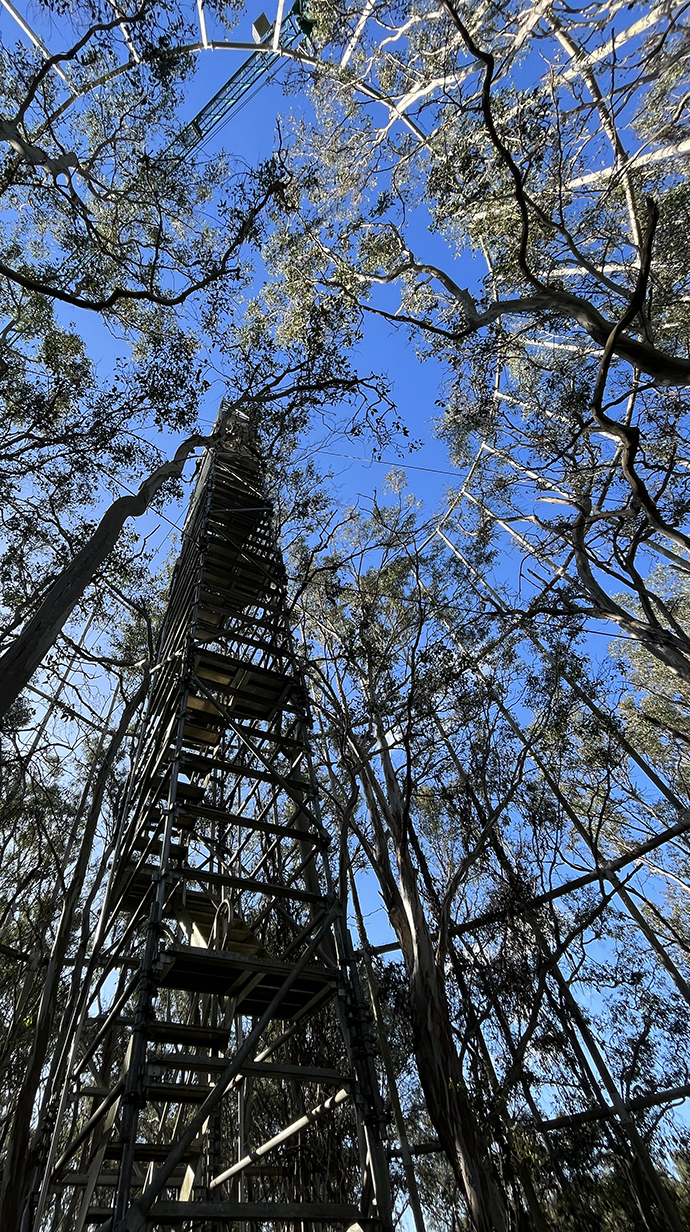Understanding Soil Fungi Could Fill Gap in Climate Change Prevention
Department of Energy allocates nearly $1M to international collaboration
OXFORD, Miss. – Scientists have long searched for ways to mitigate the amount of carbon entering Earth's atmosphere, but an upcoming international collaboration seeks to show that the answer may have been under our noses the whole time.
The U.S. Department of Energy has awarded nearly $1 million to a team of researchers led by Jason Hoeksema, ecologist and University of Mississippi professor of biology, to study soil fungi in Australia that may hold clues to better understanding carbon reduction.
"This project aims to understand the role of soil fungi in how forests respond to climate change," he said. "We understand a lot now about how different kinds of ecosystems respond in terms of storing carbon. Storing additional carbon is the normal response in many ecosystems, but there are exceptions.

"Those exceptions are important because if they're widespread, we can't count on the Earth's ecosystems absorbing a large part of the carbon we're putting into the air."
Often, the amount of carbon stored by mycorrhizal fungi outpaces how much they return to the air through respiration, a process that helps to reduce the amount of carbon in the Earth's atmosphere.
In a eucalyptus forest near Sydney, however, carbon from soil fungi and other microorganisms is being returned to the atmosphere at a much higher rate.
"What we want is for carbon to be stored in soil, in wood and other components of terrestrial ecosystems," he said. "Modern society is pumping more and more CO2 into the air. The more that gets absorbed into the ecosystem and stored long term, the more that these ecosystems are buffering against climate change.
"If not, it's staying in the air and contributing to global warming."
Hoeksema will lead a team of researchers from West Virginia University, Boston University and the University of Hawai'i at Mānoa as they partner with Western Sydney University to understand why fungi in New South Wales, Australia, act differently than those elsewhere.
"These are organisms that are ubiquitous in Earth's ecosystem," he said. "They are just as present in Australia as in the hardwood forests of northern Mississippi, but we still have a really limited understanding of what they're doing in the soil in terms of their different roles."
Global models of climate change have a "black box" where soil fungi are concerned, said Nicole Hynson, director of the Center for Microbiome Analysis through Island Knowledge and Investigation at the University of Hawai'i at Mānoa.

Researchers use towers to pump carbon dioxide into some areas of the forest and phosphorus into others at the EucFACE research site in New South Wales, Australia, at Western Sydney University’s Hawkesbury Institute for the Environment, to determine whether a lack of phosphorus has caused soil fungi to stop storing carbon. Photo by Jason Hoeksema/UM Department of Biology
"We're dependent upon ecosystems for lots of different services – from providing fresh drinking water to soil stabilization to the air that we breathe," Hynson said. "What's unclear at this point is how different climate change factors will impact these ecosystem services that all life relies on."
To understand how climate change will affect the environment, scientists need to understand all the factors that contribute to plant life, including mycorrhizal fungi.
"A lot of our climate change models have some ideas about how plant communities will change in composition and in their geographic ranges, but what's left out of these models is the soil microbial underpinnings of how plants make a living," she said.
"If you leave this unseen majority out of these models, you're missing an important factor that could determine things like plant composition and geographic location."
Understanding why Sydney's eucalyptus forest does not store carbon in the same manner as other ecosystems will help scientists fill a gap in the approach to mitigating climate change, Hoeksema said.
"All of these fungi have different characteristics, and we have a poor understanding of how they fit together to make ecosystems work," he said. "What's gone wrong is we've elevated the atmospheric concentration of carbon dioxide in recent decades, and it has nowhere to go.
"What we're trying to understand is which ecosystems have the potential to store more and why this is not one of them."
This work is based on material supported by the Department of Energy grant no. SC0025147.
Top: Students from Ole Miss and three other partner institutions will have opportunities to conduct research at the EucFACE research site in New South Wales, Australia, at Western Sydney University’s Hawkesbury Institute for the Environment. The work is funded by a grant from the U.S. Department of Energy. Photo by Jason Hoeksema/UM Department of Biology
By
Clara Turnage
Campus
Office, Department or Center
Published
September 11, 2024
